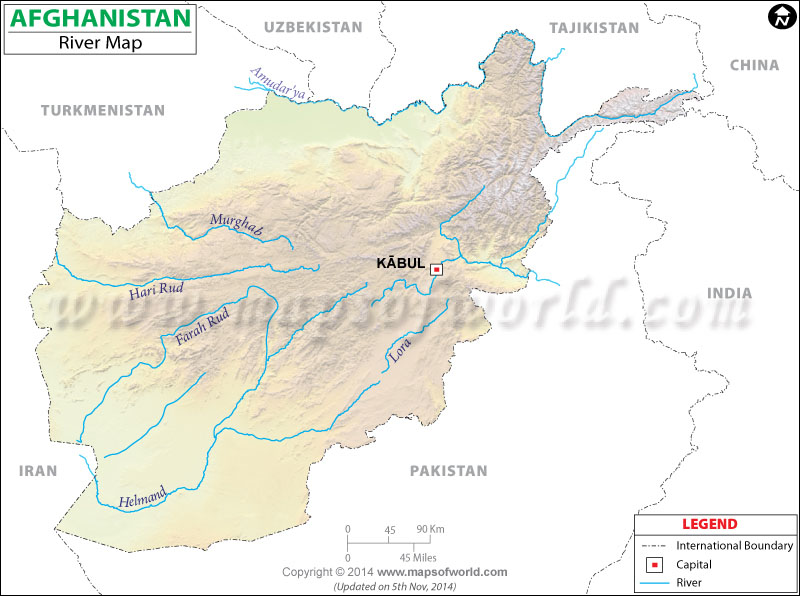India has consistently been making all efforts to rebuild politically stable and economically prosperous Afghanistan. Indeed, it is keen interested in ensuring peace and stability in the war-ravaged country without ‘boots on the ground’ and wants to see Afghanistan as a peaceful, prosperous, united, inclusive and democratic nation. In this context, being a responsible player in South Asia and immediate neighbor of Afghanistan, India has taken many constructive initiatives to wipe out tear and bloodshed from Afghanistan. Its focused areas mainly include robust infrastructure, technical and manpower extension and humanitarian assistance. Kabul has received more than $1 billion humanitarian aid and support assistance from New Delhi. In fact, India has become one of the largest donors to the war-torn country through initiatives such as $135 million Route 606 highway from Delaram to Zaranjthe, 42 power transmission line from Pul-i-Khumri and $ 90 million for the Afghan Parliament building and many more on healthcare, rural irrigation, buses, electricity distribution, capacity building and training. Of these, recently dedicated the Salma Dam is an exemplary example of India’s strong will and timeless relationship with Kabul. This Salma Dam or the Herat Dam is also known as the Afghan-India Friendship Dam is a landmark infrastructure project.
The project is a success of a joint venture of India’s Pune-based Central Water and Power Research Station and a Mini Ratna-I company WAPCOS Limited under the Ministry of Water Resources, River Development and Ganga Rejuvenation of the Government of India. Though it was conceived and designed by these organizations, more than 1,500 engineers from both India and Afghanistan equally contributed in execution and implementation of the project for more than fifteen years under the gun point.
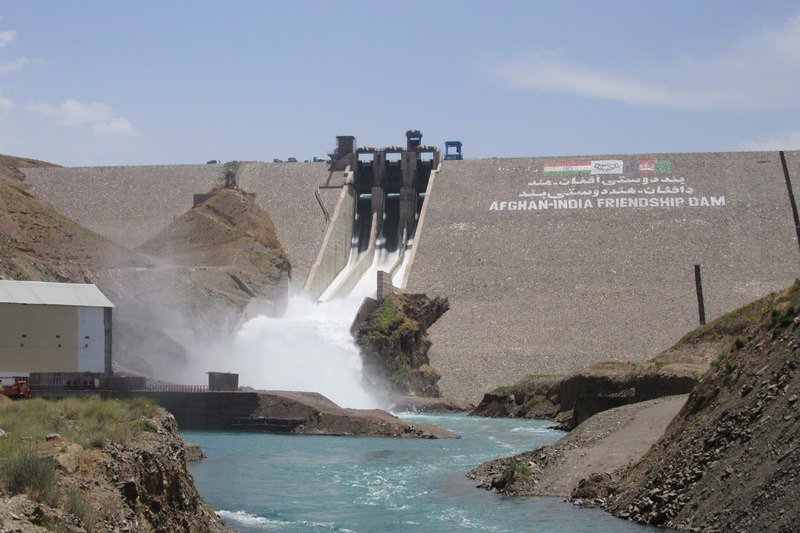
Source: WAPCOS Limited
The dedicated showpiece infrastructure project began in 2006 in the war-ravaged country on Hari Rud River which flows in the strategically vital Chishti Sharif District of Herat province in Afghanistan, which is also known as a cradle of culture, knowledge, wisdom, and civilization. It is interesting to learn that at the end of the project Rs 1,700 crore was spent on the dam, almost increase of over 400% from the original estimate with fifteen years hard labors of more than thousand workers for the reconstruction of the country. According to the data of the WAPCOS Limited, technically, the project is 107.5-meter high earth and rock–fill dam, its maximum discharge of water is 2100 cusec with overflow spillway of 3 spans of 8 m (W) X 11.17 m (H). Since the Dam is having a ski jump bucket with plunge pool energy dissipater able to generate 42 MW power with three units of 14 MW each.
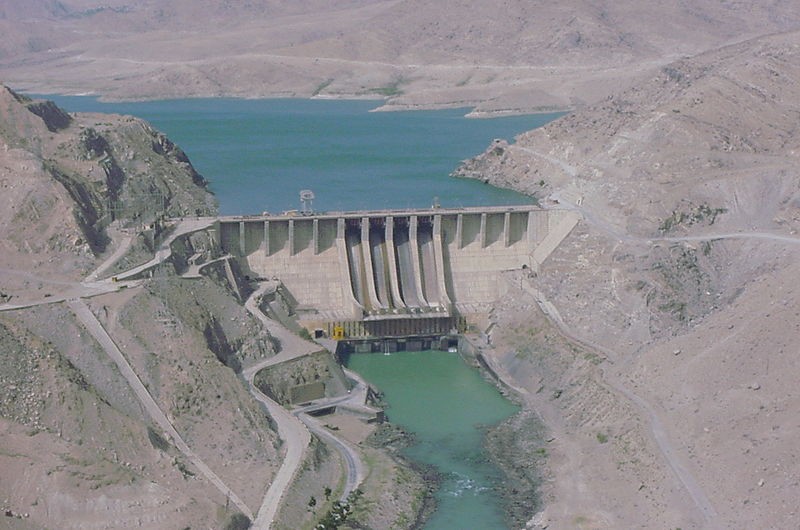
Source: WAPCOS Limited
Similarly, as per the recommendations of the CWPRS done by after the model studies, the Dam also fulfills the following technical demands. a) Adequacy of spillway capacity to pass design discharge was ensured. b) Approach flow conditions were improved by provision of guide walls c) Design of Spillway crest profile safe from cavitations damage. d) Optimization of the design of ski jump bucket. e) Uniform distribution of flow along spillway chute for particular operation of gates by incorporating divide walls. f) Improvement of flow conditions of downstream of spillway by incorporation of deflector on the right side of ski jump bucket. g) Optimization of a design of plunge pool and downstream protection works. h) Optimization of irrigation sluice tunnel by providing ramp and eye brow at the roof of exit portal to improve pressures.
Therefore, all these civil engineering skills undoubtedly will make a huge change in the economy of the Afghanistan as it irrigates 75,000 hectares of 640 villages in the districts of Chist-i-Sharif, Obe, Pashtun Zarghun, Karokh, Gozara, Injil, Zindjan, Kohsan and Ghoryanalong along with augmenting drinking water supplies. Furthermore, the project’s capacity to generate 42 MW of power will bring light to 2, 50,000 homes which are going to witness a light first time in their life. Additionally, it also meets the energy demand of industries of Herat province. So in the words of Indian P M Modi, “the Dam is a symbol of our (India) friendship and would usher in hope, light up homes, nourish the fertile fields of Heart and bring prosperity to the people of the region.”
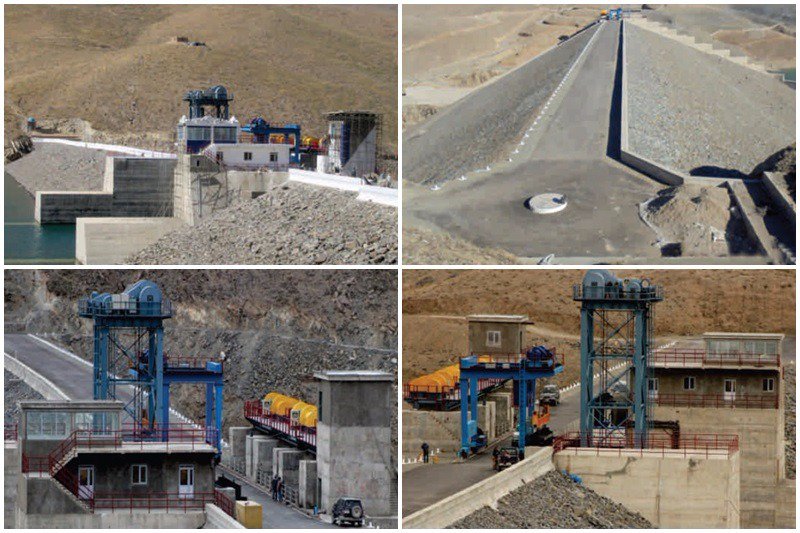
Source: WAPCOS Limited
Nevertheless, the Salma Dam project was not new to Afghanistan. It was conceived and surveyed long back ago during the Prime Ministership of Sardar Mohammed Daoud Khan or Daud Khan in 1957. Unfortunately, the dream remained incomplete during the 1970s because of a bloody coup of 1978 that overthrew President Daoud followed by the Soviet invasion of Afghanistan. Also, the internal disturbances and takeover by Taliban damaged as well as destroyed the Dam during 1990s.
Similarly, India’s commitment to finish the project on time in its second attempt suffered set back due to poor infrastructure, lack of materials and skilled manpower and extremely difficult security reasons. However, nothing has stopped India, her determination to move forward. Despite these challenges and difficulties, the long-standing dream was realized nearly after four decades. Indeed, the journey of construction of the dam enhanced the mutual trust, honesty and loyal friendship between two countries.
The dam is significant for so many reasons both for Afghanistan and India in particular and South Asia in general. In his work ‘The Amazing Indian Story behind Herat’s Salma Dam’ Devirupa Mitra has categorically highlighted the commitment of Indian diplomat who had been intimately involved in the project that “Salma dam was a project that nobody thought would be finished. Not the Afghans, the Russians, and certainly not us”. During the construction India faced many hurdles including security threat to Indian technical team. Indian engineers and technicians had to be taken from Herat to the work site and back by helicopter because of a large part of Herat believed to be home and linked to ISI-backed terrorist had Commander Jalaluddin Haqqani who had struck India’s consulate. Importantly, all equipment and material were transported from India to Bander-e-Abbas port of Iran via sea, then 1,200 km by road from there to Islam Kila border post on the Iran-Afghanistan border and then further 300 km by road from the border crossing point to the site as per the facts of Press Information Bureau of India. Similarly, raw materials such as cement, steel reinforcement and explosives were imported to Afghanistan from neighboring countries. Perhaps, more than that as pointed out by the P M Modi, in order to complete the dam on time and ensure safety of Indian technocrats “the Afghans put themselves in the line of fire so that Indian friends are safe which is considered to be the nobility of Afghan heart and the strength of New Delhi and Kabul friendship”.
In short, the Dam is a successful story of a mixed product of blood, sweat, and tears of Afghans and Indians. It is not merely building and transferring the project, along with the construction, a good number of engineering team of Afghanistan were also trained to during the development and even after the completion of the Dam training is being extended to make them manage the project without any technical hurdles. It is also believed that the Dam’s capacity to generate 42 MW power would reduce the electricity imports from its neighboring countries Iran, Turkmenistan, Tajikistan and Uzbekistan where Kabul can divert the millions of dollars on development and welfare activities.
As far as domestic pressures and politics are concerned it is the first time in the political history of Afghanistan that concrete and confidence achievement was attained by the National Unity Government under the stewardship of President Ghani, Chief Executive Abdullah Abdullah and Water and Energy Minister Ali Ahmad Osmani who crossed the identities of Pushtuns, Tajiks, Uzbeks and Hazaras for peaceful and united Afghanistan. More importantly, the Dam is being considered as a new path to prosperity because it is on the route to Chahbahar port in Iran. In other words, the role of Afghanistan and particularly that of Herat province play a vital role in exploiting the full potential of a geo-strategically important Chahbahar port that is being developed by India at the cost of $500 million. It also will include a Trade and Transit Agreement between Afghanistan and Iran.
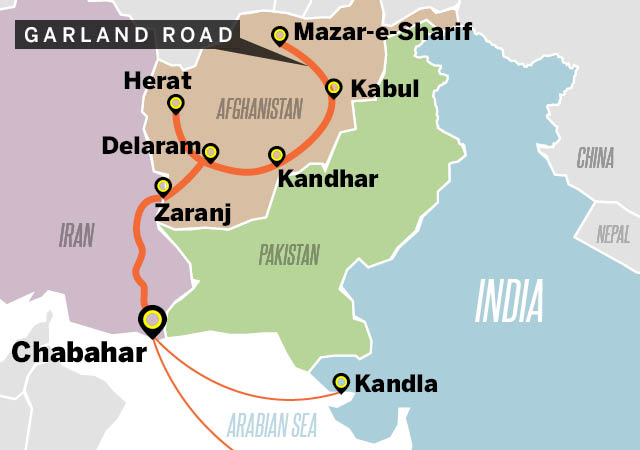
Soruce:http://www.newsflicks.com/story/india-s-port-of-profit-chabahar
It is also interesting to know that it was Afghanistan’s request to India to send its technical expertise to materialize hydroelectric projects in 1968 which ultimately led to the establishment a public-sector ‘Water and Power Consulting Corporation’ consisting of highly caliber technocrats. Finally, Afghans expressed heartfelt thanks to India at the time of the dedication of the Dam. As observed by Mugdha Kapoor “the most amazing part of this Dam is that on the day of dedication, Afghans were filled with exhilaration and were all praise for India for taking up the construction of the dam. They took out processions, sang Bollywood numbers and presented the Indian officials at the consulate with flowers. All this is just to thank India enough for its efforts. The proud and amazing part was that the Afghans carried a 100 m tricolor, along with their national flag, on the streets of Afghanistan to express gratefulness to the Indian government”. At the same time, Afghan President Ghani also recorded his thanks that “Salma Dam is another big step in deepening and broadening the relationship between Afghanistan and India.” Thus, it is believed that this Dam further would help Kabul to balance or reduce Pakistan’s negative role in Afghanistan.
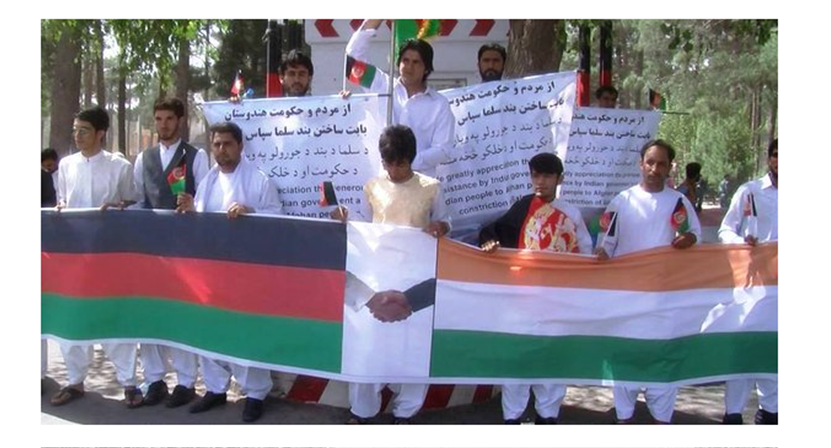
Source: http://www.siasat.pk/forum/showthread.php?370663
In fact, “It is strong evidence for India’s sustained long-term commitment towards the Afghan-led, Afghan-owned, broad-based and inclusive process of peace and reconciliation. Undoubtedly, in reviving the region, restoring hope, renewing life and redefining Afghanistan’s future the dam definitely play a decisive role because this dam has not been built by bricks and mortar, but by the faith of our friendship and the valour of Afghans and Indians” expressed the P M Modi in his inaugural speech. However, now, the role of Pakistan is a very crucial because of this new course of cooperation and prosperity still under 24×7 guard of a large contingent of security personnel from possible terrorist attacks. Thus, as President Ghani tweeted “We (Afghans) don’t expect Pakistan to bring us peace. We want Pakistan to banish those groups from its territory that fight against Afghanistan”. Hence, Pakistan which has been accused of giving shelter to the forces of destruction is highly important to harvest fruits and full potential of the Dam.
According to the study of the United Nations Environment Programme, the Dam is expected to cut off the annual water flow of Hari Rud River to Iran by 71% considered as a significant loss to Iran. Therefore, Qarib Rahman Shahab cautioned the Afghans to get ready face consequences of the Dam [The Rising Costs of Water: Dire Consequences for Afghans in Battle with Iranians]. It will have far-reaching repercussions on Iran’s economy, environment, and agriculture in turn which directly affects Iranian food companies, agricultural products and electricity supplies market in Afghanistan. In another major concern, there will be dramatic changes in Tajikistan and Turkmenistan relations with Afghanistan as they lose a significant electricity importer or consumer which is considered to be a major source of income for Tajikistan and Turkmenistan [Afghanistan and regional instability: A risk assessment by Heidi Kjærnet and Stina Torjesen NUPIR report-2008].
In essence, subject expert and columnist Happymon Jacob as rightly pointed out the future of Dam as well as importance next door in ensuring the security of the Dam and reaping fruits of the hard labors. Thus, he expresses concerns that the completion of the dam has proved that ‘India isn’t a donor country but a reconstruction partner of Afghanistan. However, firstly there is no guarantee that India’s investments in Afghanistan would be safe from future attacks, New Delhi does not seem to have a contingency plan to deal with it other than perhaps putting an end to the good work there. Secondly, New Delhi does not seem to have recognized the fact that reconstruction and peace-building should go hand in hand. It is important to calibrate reconstruction efforts with reconciliation and peace-building to sustain the former. India has so far shied away from participating in the Afghan peace process since the ouster of the Taliban regime in 2001. If New Delhi’s Afghan policy is to be meaningful and sustainable, it needs to do two things: get like-minded countries on board India’s reconstruction efforts in Afghanistan, and support and engage in the Afghan reconciliation and peace-building process. Former Afghan President Hamid Karzai recently stated that “India, Iran, and Russia should be included in the talks with the Taliban.”
In this context, as expressed by the P M Modi in the floor of the Parliament of Afghanistan “Too much blood has flown down Kabul River. Too many tragedies have darkened the mountain slopes. Too many dreams have burnt in the fire of a senseless conflict. Afghans are not only fighting for their future but are standing up for all of us and a safer world”. In expressing deeper commitment towards Afghan youth in the 21st-century era, he also appealed them not see their future in international terrorism rather information technology and also promised them that “Your (Afghans) suffering is our pain, your dreams are our duty, your strength is our belief, your courage is our inspiration. Above all, your friendship is our honor.”
Nonetheless, India has to walk miles in bringing a smile on young children of Afghan, life in their streets, prosperity in their cities, unity in their society and peace in the nation along with the like-minded international community. Thus, in this effort to accommodate Kabuliwala in India’s ‘neighbourhood first’ policy, India’s future course of action in Afghanistan should be guided by the verses of the thirteenth century Sufi poet Rumi “where there is ruin, there is hope for treasure.”

